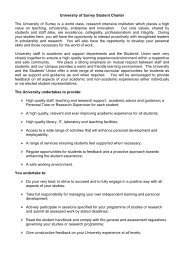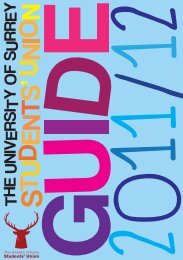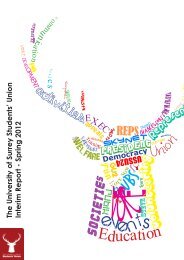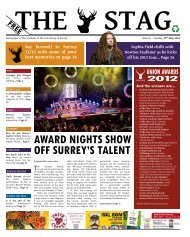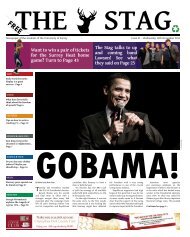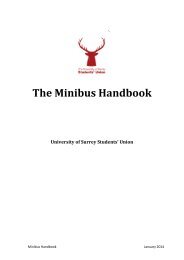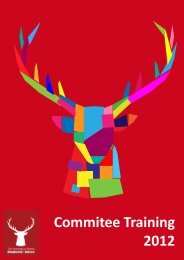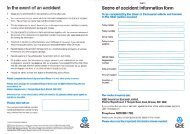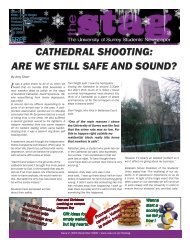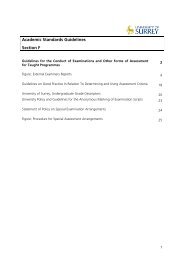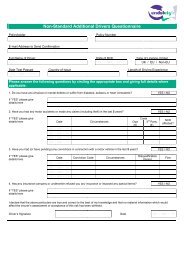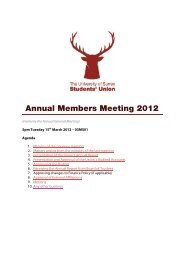Issue 60 - University of Surrey's Student Union
Issue 60 - University of Surrey's Student Union
Issue 60 - University of Surrey's Student Union
Create successful ePaper yourself
Turn your PDF publications into a flip-book with our unique Google optimized e-Paper software.
Sci/Tech Editor: Alex Smith | Copy Editor: Sophie Vickery<br />
The Stag | 29 th May 2013<br />
SCIENCE & TECHNOLOGY 15<br />
Science & Technology<br />
First ‘unmanned’ aircraft<br />
takes it’s maiden voyage<br />
Unmanned full-size aeroplane on the tarmac. The UAV to become commercialised into a passenger jet?<br />
©BAE Systems<br />
By Mike Colling, Science & Tech Team<br />
BAE Systems Jetstream<br />
A research aircraft has become<br />
the first pilotless aircraft to fly<br />
through UK shared airspace. The<br />
500 mile flight from BAE Systems’<br />
in Warton Aerodrome, Lancashire,<br />
to Inverness in Scotland was<br />
controlled by a ground-based pilot,<br />
with navigational instructions<br />
provided by the National Air<br />
Traffic Services (NATS). Known as<br />
the ‘Flying Testbed’, the aircraft<br />
was controlled by onboard sensors<br />
and complex robotics.<br />
The flight was the latest in a<br />
series <strong>of</strong> trials carried out as part<br />
<strong>of</strong> the ASTRAEA (Autonomous<br />
Systems Technology Related<br />
Airborne Evaluation & Assessment)<br />
programme and was not technically<br />
unmanned; two safety pilots were<br />
on board in case anything went<br />
wrong, and were responsible for<br />
the take-<strong>of</strong>f and landing.<br />
The ASTRAEA programme aims<br />
to investigate the “technologies,<br />
procedures and regulations”<br />
necessary for autonomous aircraft<br />
to operate safely in UK airspace.<br />
Funded by commercial companies<br />
(including BAE Systems) and the<br />
UK government, its achievements<br />
have helped place the UK in “a good<br />
position globally on unmanned<br />
aircrafts”.<br />
The technology required for<br />
unmanned flight is not new; for<br />
many years militaries around the<br />
world have used Unmanned Aerial<br />
Vehicles (UAVs), or ‘drones’, for<br />
both reconnaissance and armed<br />
attacks. The latest ASTRAEA flight,<br />
however, marks the first time such<br />
an aircraft has been flown through<br />
UK airspace shared with passengercarrying<br />
airliners.<br />
It is hoped that the programme<br />
could pave the way for new search<br />
and rescue operations, and perhaps<br />
even unmanned passenger flights<br />
in the future. Whether customers<br />
will be willing to pay to fly on<br />
a pilotless aircraft, however, is<br />
another matter altogether.



